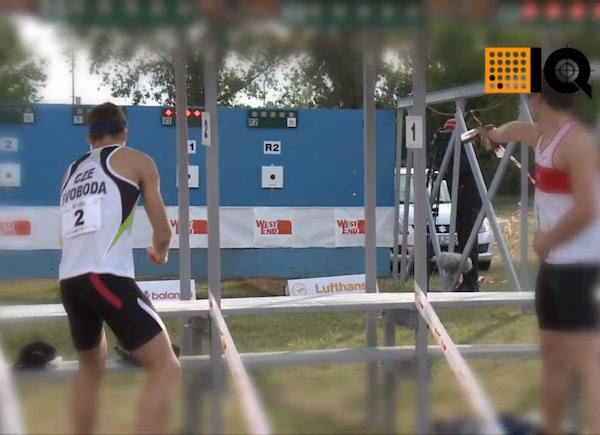All About Shooting
I have to admit that shooting stuff doesn’t seem to me like the epitome of athleticism but shooting has been a part of all but two instances of the modern Olympics. In 1900 live pigeons were used as targets but since then they have been replaced by inanimate ones. While shooting may not require a ton of raw power, it is charming to see people with normal bodies win Olympic medals.
How Does Shooting Work?
There are a wide variety of shooting competitions at the Olympics. One can split them up along several different dimensions. There is the weapon used: rifle, air rifle, pistol, air pistol, and shotgun. For the rifle and pistol competitions (air and not) most of the events use targets that look a little like the ones you’d see in an archery competition. The targets have concentric rings. A strike in the center is worth ten points, one in the next biggest ring is worth nine, and so on. In a couple of pistol events, the concentric ring system is replaced by a binary one — you either hit it or you don’t. In the shotgun events, shooters aim at moving clay targets filled with some kind of colored powder to help spectators and judges know when contact has been made. The position of shooters varies as well. Rifle and pistol shooters may be standing, kneeling, or lying on the ground or some combination of the two. Shotgun shooters may start with their shotguns at their hips or already up at their shoulders. The distance, and in the case of the shotgun events, the velocity of the targets also varies. The shotgun events, by the nature of their moving and eventually falling targets, and one of the pistol events which is called a rapid fire event, have limits on how much time a competitor must take before shooting the targets.
Why do People Like Watching Shooting?
Like archery, there is joy to be found in watching people whose ability to stay calm and force their bodies to make insanely precise movements with no shaking under the most intense pressure of their athletic lives. In previous Olympics, that may have been the primary source of enjoyment since the cumulative scoring of shooting events made close finishes rather rare. That won’t be the case in these Olympics because changes have been made to wipe out the scores before the final rounds.
Check out some highlights from the 2012 Olympics:
What are the different events?
Hopefully, given the description in the how does shooting work section, this listing of events will more or less make sense. There are three rifle events: 50 meter rifle prone, 50 meter rifle three positions (prone, kneeling, and standing), and 10 meter air rifle. There are four pistol events: 50 meter pistol, 25 meter pistol, 35 meter rapid fire pistol, and 10 meter air pistol. There are three shotgun events: trap, double trap, and skeet. The differences between trap and skeet are way too confusing to be worth going in to. Basically, they are rival versions of the same general idea — hit the flying clay discs.
How Dangerous is Shooting?
You can bet this event was dangerous for pigeons in 1900!! Nowadays, I simply can’t imagine anyone injuring themselves. Guns are certainly dangerous, but not in such a tightly controlled environment filled with world experts.
What’s the State of Gender Equality in Shooting?
Gender equality in shooting is confusingly poor. I can’t think of a sport which should be more equal in terms of gender and yet, the organization of shooting is completely unbalanced. Of the 15 gold medals up for grabs, women are only eligible for six of them. Moreover, the events they are excluded from show a distinct lack of respect. Women have a trap event but not a double trap. They are allowed to compete in the 25 meter rifle but not the 50 meter or the 25 meter rapid fire events. This is especially absurd given the historical success of women in shooting. Before these events were split, they were open to everyone. During that time women won gold medals twice. Showing what seems to be an intentional discrimination, women were banned from competing in skeet shooting in 1996 after a woman had won the open event in 1992. It wasn’t until 2000 that a women’s event was introduced. Bah humbug!
Links!
Bookmark the full Olympics schedule from NBC. Shooting is from Saturday, August 6 to Sunday, August 14.
Read more about shooting on the official Rio Olympics site.


